
24 minute read
Ask The Professionals
We wanted to hear from our Business Partners and Professionals about how COVID-19 was affecting their businesses and if they have had to make drastic changes in the way they deliver their products or services in light of our current global pandemic. We recognize there may be many challenges that our business partners and professionals are having in dealing with the coronavirus virus, and so we asked them to share
QUESTION #1 - What affects (if any) has COVID-19 had on your business directly? QUESTION #2 - What unique measures are you having to take in response to this virus?
Shawn O’Flaherty -Property Manager, Capital Centre Condo Corporation The Capital Centre is 230 units, located in 3 towers and has 14 commercial units on the 2nd floor and main floor and a public parkade. We are managing the current situation with communication and constant cleaning. We sent a letter out to all owners via email and under all of the doors at the beginning of this month. We are constantly encouraging residents to “social distance”, and to stay home if they are ill. We have also asked them to notify us if they have any symptoms so that if we do have to enter their suite we can do so with extra protection. The other topic is asking residents to be extremely CAREFUL in their units and not cause an issue that would result in our staff or a contractor needing to enter multiple units to clean-up or remediation. I have a small day-to-day team that keeps the entire building running and we need to avoid staff from getting sick at all costs.And finally, we are asking our owners to be a good neighbor. We have a few elderly people in the building and there are several owners that have offered to assist these residents so that they can stay home and away from the general public. I have been a property manager for 13 years and this “lock-down” is a new experience for me and it comes with thousands of variables. Rod Donahue - Complete Care Restoration Although our business has not been completely interrupted like many, we have encountered obstacles that have disrupted the flow of work, reduced certain services, and created changes in our labour requirements. Disaster restoration remains a required and necessary continuation of service as water, fire and other random damaging losses continue to occur and in different circumstances than pre-pandemic. As citizens remain at home during this time, residential claims could elevate in frequency. Appliances and mechanical systems continue to fail and create leaks. Some commercial losses expand as business closures and open hour limitations cause some losses to be discovered later than usual. While emergency services remain strong, many non-essential services have tapered down considerably. The physical distancing measures have resulted in choices by all on what is necessary interaction and immediately necessary. The trades are finding access to sites less frequently and with greater costs to perform the work with personal protective equipment and other measures. Essentially our business has transitioned from a fullservice restoration company to more of a disaster mitigation specialist at this time. All staff now either work from home and/or are dispatched directly from home to a job site without interaction with any coworkers. We have implemented strict policies and procedures for all site related work with the element of personal safety and protection as primary concern to address and eliminate the new hazards added to the workplace. None of our staff interact with each other or our client base unless in full PPE at all times consisting of Tyvek suit, gloves, full face respirator with HEPA/Vapour combination P100 cartridges. Essentially, we have migrated the same process we use during mould remediation and asbestos abatement into our other everyday process for the protection of our individual staff and our clientele. We have a select group of staff who remain at the office and warehouse daily to ensure business continuity with tasks that are simply unable to be performed remotely. Our warehouse isolation team also works in full PPE and assists by preparing and disinfecting equipment, tools, vehicles and supplies for our staff and essentially forms the role of our supply chain to jobs with a specific element of decontamination procedures at all times. Ulli Robson - Safe With Ulli It’s business as usual...just modified. Unfortunately, crime does not seem to go away “just” because of COVID-19. Therefore,


we’re still actively supporting our clients, we’re just doing it with an appropriate degree of caution and respectful social distancing. Very rarely do we need our clients to be present when we are on site, as long as they provide us with access to their premises. Good communication has never been more important than now. And, whenever possible, we provide our support remotely. At this time, we are encouraging our clients to be set up on our “health-monitoring platform”, constantly monitoring not just their cameras, but every part of their entire system, including but not limited to power & Internet. This would guarantee us the ability to remotely support our clients on a moment’s notice. This has been on my to-do list for quite some time. COVID-19 made it obvious how crucial this service will be if we are not able to be physically on site. Steven Knight - Mosaic Home Services Ltd. Being a seasonal business that does depend on trade shows to kick off spring, we have had to adapt to the cancellation of 9 different trade shows that we were registered so far this year. We have had to take extra precautions for our service team. We are promoting social distancing, and instituting work from home policies for most staff, and mandating self-isolation for all team members returning from travel. We are doing everything we can to talk to our customers but also to avoid meetings. Kolton Canning - Trusty Tree Services To minimize risk and reduce the chance of exposure we are doing our best to coordinate with our clients through emails and phone calls, completing all work that does not include contact with other people, increasing cleaning and disinfecting practices in our shop and with our equipment. We continuar to monitor updates from local provincial and federal health agencies to protect our employees and our clients. If any of our staff are to develop flu-like symptoms they will be asked to self-guarantee and to contact the Public Health Agency and follow the COVID-19 testing protocol. Rafal Dyrda - GeniePad.com We are having a lot of clients contacting us and asking us about how to conduct remote meetings. Because we are a fully remote team and have been operating with the kind of technology needed to do this, we have expertise in this subject. We use Zoom for our online meetings and it is a free tool to use with upgrades to purchase if you need them. There are other tools available to support video conferencing so we recommend that any board or company that needs to have meetings online rather than having an in-person meeting should hop on to google and check out what options there are to help us all out during this time of social distancing and isolation. Fay Poholko - All Weather WIndows COVID-19 has had a large impact on our business in Alberta where we sell direct to homeowners – we have cancelled all in-home appointments for quotes, installation and service unless the home is unoccupied. We are offering virtual quotes to customers who feel comfortable enough with technology to use FaceTime or Zoom. Showroom appointments are by appointment only and only if necessary. Our manufacturing facility is going through changes as well with rearranging workstations to allow more space between them and staggering shifts and lunch breaks to reduce for groups and allow for physical distancing. Nationally, we are seeing our dealers and builders close their businesses or reduce their hours which will reduce the demand for production. Long term could lead to layoffs Bev Matthias - Century 21 Platinum Realty As a result of the Covid-19, we have taken additional measures in our office with providing hand sanitizer, wipes, and staff in our office have ensured that their desks are far enough from each other for the social distancing. Our meetings are held with the same distances in place. We are not showing any occupied units to prospective tenants, we are only showing vacant units. We have disposable gloves that we can wear going out to the units and when we are going out for supplies. We have a reception log at the front of our office for anyone who walks in our door needs to sign in and sanitize their hands. As keys are given out to suppliers, we sanitize them before we hand them over and again when they are returned. On a continual basis, we sanitize the most often used hard surfaces such as door handles, light switches, etc. Cody Hodson - Off the Ledge With Off The Ledge being a newer company, we have recently invested in state-of-the-art equipment and so this financial burden matched with the delay of income has forced us to reduce all non-essential costs as we prepare for a difficult spring and summer. With networking, Expos, and other events being cancelled we have taken the time to contact our clients through emails and phone calls. Exterior quotes are being conducted by assessing properties and keeping a safe distance from others. Despite the bad timing of COVID-19, we are digging deep to help the community the best that we can.
Business - Commercial Condo corporations SUNSHINE CLEANING SERVICES LTD.

Ph:780-477-7067
sunshinecleaningsltd@gmail.com
#309, 5227 - 55 Avenue NW Edmonton, Alberta, Canada T6B 3V1 TLAdjusters.com Telephone: 780.463.7776 Fax: 780.462.1280 Toll Free: 1.800.803.4109

We have been operating in Northern Alberta for 40 years. We provide a wealth of experienced insurance adjusters and superior customer service in commercial condo, property and liability claims.
We adjust property damage, liability claims and course of construction claims, for all insurers. We specialize in claims involving property and condominium management Þrms and condo boards, including their self-insured consulting requirements. Our focus is excellent customer service.
To discuss your claims requirements, please contact:
Cory Gilliam, BA, CIP 780.395.2222 cgilliam@tladjusters.com
Morris Blatz, CIP 780.395.2205 mblatz@tladjusters.com

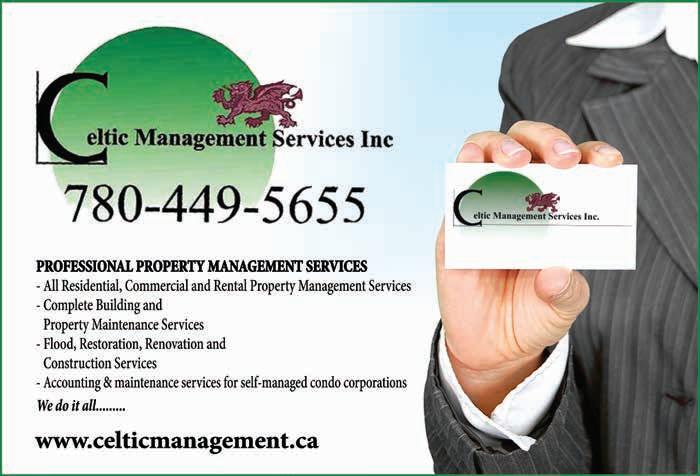
S u c c e s s f u l l y s e r v i n g A l b e r t a P r o f e s s i o n a l l y f o r o v e r 1 2 y e a r s
Raising the BAR

Since 2015, condominiums that are new builds in Alberta have required the developer to have a Building Assessment Report (BAR) prepared by a qualified person, including engineers, technologists and architects. The New Home Buyer Protection Act (NHBPA) requires that the BAR is completed within 180 days after the first transfer of title in the building by Rebecca Medel
The BAR was designed as consumer protection to ensure a second set of eyes takes a look at the risks associated with condominium development. It’s a final inspection report of the building to make sure it has been constructed in accordance with industry standards and codes. This is something that was not required prior to 2015. Five years into this reporting system has given all those involved in the process—developers, consultants, lawyers and condo owners—time to take a good look at this reporting system and offer suggestions on its improvement. “In my opinion, I would like to see BARs done at different stages throughout the construction rather than done at the end of construction because the person preparing the BAR then doesn’t get to look behind the walls and see the detailing after the unit has been finished,” says Hugh Willis of Willis Law. He has been working with clients affected by the BAR since its implementation. He’s referring to the fact that most of the walls are up by the time the BAR is written. Inspections are not required during construction so there is no significant risk mitigation strategy. Oftentimes, developers are unaware they need to have a BAR prepared and can then commission one after construction, which is perfectly compliant with BAR regulations. But in the opinion of Keller Engineering President Justin Tudor, these late-stage reports “are often woefully inadequate.” They meet the minimum standard of BAR reporting and are often just
#203, 13455 - 114 Avenue NW Edmonton, AB Canada T5M 2E2 Fax. 780.448.7297 Maint. Emergency Line After Hours 780.499.8424 Robyn Brown,
Vice President Associate Broker Partner CPM ®, ARM ® Ph. 780.448.4984 ext. 323 Cell. 780.918.4187 rbrown@ayreoxford.com C e l e b r a t i n g 2 5 Y e a r s 1 9 9 5 - 2 0 2 0 Accredited Management Organization ®
one-pagers stating no deficiencies have been found. These short letters do, however, accommodate the regulations. But other firms turn out reports that number into 50 – 100 pages. There is nothing in the regulations that requires inspections during construction, so there are no milestones that must be inspected or list of component inventory that should be reviewed. This leaves consultants to decide for themselves how much detail to include in the report. “Unequivocally, the BAR is the tool required to ensure consumer protection within Alberta,” Tudor says. “It is necessary. It is important. It just needs to be modified to provide better aligned incentives and provide a more thorough document. It’s critical that the BAR remain part of the condominium process, whoever’s responsibility it is. But it can’t go away.” As a building envelope specialist, David Leonard of Entuitive has completed many BARs and knows the work that is required to write a thorough report. He makes visits to the site before the build is complete to catch any deficiencies. “We go to site, we have a look at every nook and cranny of every unit on the project—at least related to the common property elements— and get a lot more of a specialized eye on what the contractors and trades are doing,” Leonard says. Without lumping all developers together, he says one con of the reporting system is there can be a perception that since the developer is the one hiring the consultant to complete the BAR, they might ask for a shorter report. “As a consultant, our product is the reports we produce. There can be a perception because we are engaged by the developer that we are the developer’s consultant. But there has to be an understanding that there is a moral obligation from an engineer’s perspective to not turn a blind eye to something that is blatantly wrong, and stamp it and sign off on it,” says Leonard. “The BAR can technically be one page and say everything was built correctly, but what does that really mean to someone purchasing one of these condos? If we can speak to how the buildings were constructed and put a little bit more dialogue to them, it doesn’t take a ton of time but it does provide a much higher quality product.” Sandy VanRiper is a new condo owner. After retiring, she and her husband were the first to sleep in their new condo building in Edmonton two years ago. However, there are ongoing issues with the developer that have made their new home a bit of a nightmare. The building doesn’t yet have enough owners to have a board made up of them. The developer did not sell enough units and ended up registering a company that bought up the existing units to rent out. As the developer owns the most unit factors, this means he and his associates were able to elect themselves as the board of directors at the AGM in the summer of 2019. “After the AGM, they agreed to let some of us owners talk with the property manager about common property building deficiencies and if they’re ever going to be rectified,” VanRiper says. “That just barely happened. This guy has ducked and dived and cancelled meetings and we have no recourse.” VanRiper says the owners love their building, but they have not seen a budget andare not paying into a reserve fund study. The owners have problems in common areas they’d like dealt
with, and as there is one year to have problems looked at under New Home Warranty, that time has come and gone with the developer not having to deal with anything the owners have requested. Willis has also noted this problem in new builds. “I think one of the challenges is the dovetailing between the Condominium Property Act and the New Home Buyer Protection Act (NHBPA) can be improved. Because what we’ve got right now is a circumstance where a developer’s interim board can be the one controlling the affairs of the corporation while the oneyear workmanship and materials warranty runs. And then you’re put in a position where you’re asking a developer-appointed board to report the developer for negligent construction and that’s impractical.” Alberta’s Ministry of Municipal Affairs oversees the BAR and was recently in consultation with stakeholders regarding its efficiency to date. As Willis points out, one of the challenges is that there’s legislation that applies under the NHBPA, Insurance Act, Condominium Property Act, and Condominium Regulations.

As well as warranty documents that call for a distinction between a deficiency and a defect. It can turn into a lot of paper-trailing and responsibility-shifting when deficiencies do arise as there are multiple pieces of legislation from different departments that all apply and make everything very difficult and complex. A model that might be worth looking at is Ontario’s. Tudor works in both Alberta and Ontario and says a lot of the guiding legislation in Alberta came from the Ontario model. Ontario has what’s called a performance audit which is the same idea as a BAR, however it’s the board’s responsibility to engage this within the first year after turnover. That means there’s more incentive to find the deficiencies and make them part of a warrantable claim rather than making sure everything is wrapped up on the developer’s end. Many consultants in Alberta are providing technical audits, for example, of the stucco or the roof, but generally owners are undertaking these technical audits of the entire building after construction. These audits are extra work beyond the BAR and are paid for by the condominium corporation rather than the developer. “It is essentially the board taking on the nonlegislative role of doing a technical audit that looks like the performance audit in Ontario. A deficiencies list created for warrant claim and negotiating purposes with the developer,” says Tudor. “Because boards now feel that’s in their best interest to protect their investment, it feels like we’re duplicating work here because boards are not necessarily trusting the BAR that’s provided. Furthermore, there’s no real mechanism to ensure the BAR is provided to the first non-interim board so that they can act.”
It seems to be the standard industry response that the BAR is necessary and should stay, but all agree changes do need to be made.
“A stronger BAR, a more in-depth BAR, would ideally serve to protect both the future owners as well as the developer; more defects could be caught early and corrected before they are hidden and may avoid lawsuits or insurance claims later on,” Tudor says. “I think I would like to see the BAR continue with some additional detailing on what ought to be included,” Willis says. “So an area for discussion is maybe we can separate the BAR into its components to the extent that they’re able. For example, mechanical does mechanical, that sort of thing.” The BAR is fundamentally necessary to protect both ends of development—builders and owners—and any changes proposed need to address both parties equally.
Rebecca Medel is an award winning freelance writer and regular contributor to our magazine.
On board

WHAT’S UP DOC? AN UPDATE ON CONDOMINIUM DOCUMENTS by Carrie Plett
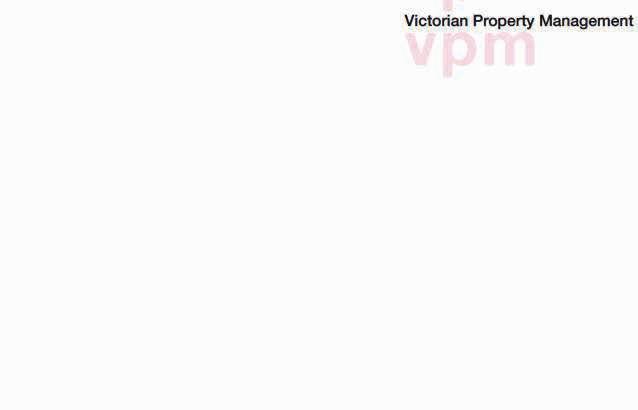

Your condominium corporation’s documents are a record of the business activities of your condominium and serve to provide information for owners, board members, legal counsel, mortgage companies and prospective purchasers. Documents may be used in litigation for and against the corporation. It is important for the board of directors to ensure their documents are up to date and that they are following the requirements of the CPA and the Regulations which came into force January 1, 2020. Documents may now be requested by an owner, purchaser, mortgagee or the solicitor of an owner, purchaser or mortgagee. Owners may make copies of any documents obtained and provide them to other parties. This is important for board members to be aware of as your condominium’s documents can be reviewed by various professionals, especially during the sale of a Unit. Documents Provided Upon Written Request Two of the most important documents that a condominium corporation must prepare are the Estoppel Certificate and the Information Statement. These documents provide information about the condominium corporation and the unit’s financial obligation to the corporation at a specific date. They must be up to date and current when prepared. Estoppel Certificate (section 43.2 CPA) - this document confirms the financial obligation of the unit to the corporation including when the amount and when condominium fees are payable (monthly/yearly), the amount of any arrears and amount of interest on any unpaid contribution. Information Statement (section 20.52 Regulations) - many of the requirements have not changed and the following have been added: • Actions against the corporation including the amount claimed. • Loans – details of the loan including starting and current balance, interest rate, monthly payment, amortization period, default information and the purpose of the loan. Best Practice: Boards and condominium managers need to ensure that information provided on both the Estoppel Certificate and the Information Statement are correct. Other changes to documents upon written request include: • Particulars of subsisting and prior management agreements. • Annual financial statements (as opposed to most recent financial statements). • Approved minutes of all general meetings or draft minutes if not yet approved (for meetings at least 30 days prior). • Approved Board meeting minutes.
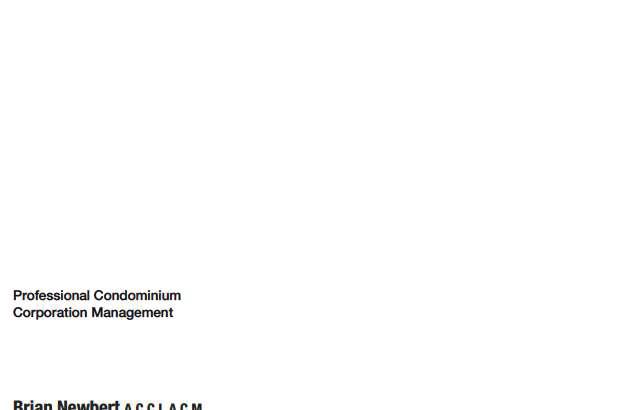
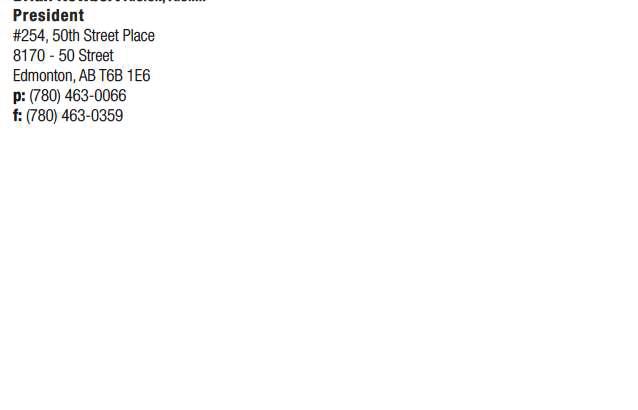
EDMONTON’S TRUSTED PROPERTY MANAGEMENT PARTNER

We are committed to creating valuable solutions for real estate owners, meeting their needs and maximizing the value of their real estate assets.
AJAY PARMAR
BROKER | PRESIDENT
FAX CALL
780.641.0228 780.641.0222
WEB EMAIL
www.groupthree.ca aparmar@groupthree.ca T5N 3W6 Edmonton, AB 300, 10240 -124 Street
#1
FOR WINDOW & DOOR REPLACEMENT
• 5 year installation warranty • Over 30 years experience • Licensed, bonded, insured, WCB certified • Comprehensive product warranty • Knowledgeable staff • Commercial financial solutions
1-800-639-8846 | awwreno.ca
780 413-1655
Yes - we have the solution
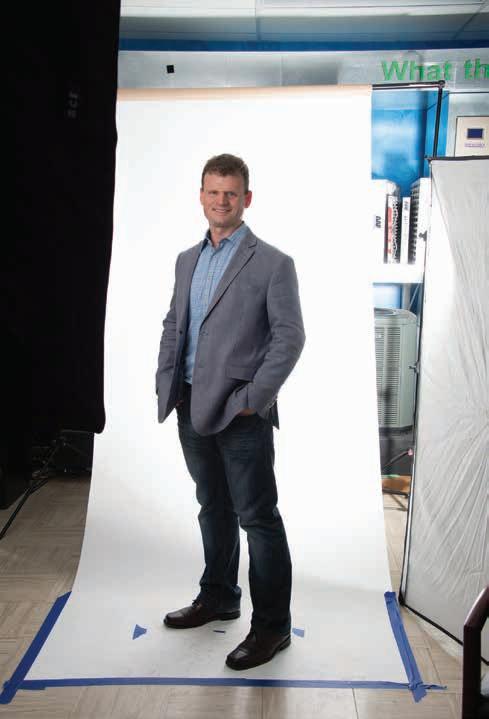
Keven Lackey CVI - A.S.C.S. Helping condominium boards nd solutions to complex HVAC problems is something I love to do. Converting old Magic-Paks with new e cient, cooling and heating systems is something we specialize in. Best of all, our solutions will not alter the outdoor aesthetic of the building. I’d love to help! 780 699-8592
Best Practice: Board members and condominium managers should ensure that all motions are properly recorded and noted as carried or defeated. It is also recommended that board members ensure there is flow throughout the meeting minutes. If an item spans several months to complete, ensure that the resolution to the issue is noted in the minutes of the month following the completion. • Copy of consolidated rules made by the corporation (the government has given boards until March 31, 2020 to prepare and provide a list of the rules to Owners). • Text of any ordinary or special resolutions voted on by the corporation and the results of the vote (unless show of hands). • Copies of any reports by professionals (e.g. engineering reports, building assessment reports and others) unless the report has been requested by legal counsel for actual or contemplated litigation. • Copies of insurance certificate and policies. • Current Standard Insurable Unit Description. This is a new document required to be registered at land titles. This document should be completed and brought to the next AGM for owner approval. It can be registered at land titles prior to the AGM. • Copies of reserve fund plans, reports and annual reports. Best Practice: If a board determines they are following the study as their plan, they should ensure a proper motion is made and carried at a board meeting and that a copy of the plan spreadsheet is available (boards may want to attach it to the minutes). Documents Provided with Specific Time Frames Noted The Annual General Meeting minutes must now be provided in draft format to the owners (and mortgagees who have provided notice) within 60 days of the AGM. The draft minutes must include the results of any votes that took place and the number of votes that each board candidate received during the election part of the meeting. If there was a special resolution voted on, the minutes must include the number of persons entitled to vote and the unit factors voted for and against the resolution. The annual budget must now be out to the owners/mortgagees no less than 30 days prior to the fiscal year end. If adjustments are made to the budget throughout the fiscal year, the revised budget must be sent out to the owners/mortgagees as soon as possible. Fees for Documents and Document Retention The Regulations have also addressed the maximum fees that can be charged for providing documents (corporations may charge less than the mandated maximum fee). Traditionally this has been a contentious topic due to the prices that were being charged by various providers of condominium documents. The fee structure is now set with flat rates for documents and rush fees. Fees apply whether documents are provided in electronic or hard copy format. Regular Fees • Estoppel Certificate: $200.00 • Information Statement: $100.00 • Other documents: $10.00 or $0.25/page for documents in hard copy over 40 pages. PLEASE NOTE - Board minutes
compiled for a particular fiscal year are considered to be one single document. You cannot charge for each set of minutes separately. Rush Fees – Additional charge over and above the regular fee for documents provided within 3 days (excluding holidays) Estoppel Certificate: $100.00 Information Statement: $50.00 Other documents: $20.00 Best Practice: In order to save both the owners and corporation time and money, it is recommended that you have owners sign up for electronic service of documents. Having a website with documents being readily available for your owners can be helpful. Until January 2020, there was no set timeline for keeping copies of documents. We now have a complete list of documents and the time frame that the board must keep copies of the documents (Schedule 3 Regulations - download available from the CCI Resource Centre). Documents may be kept electronically, provided that they are complete, legible and capable of being reproduced if necessary. So What Should Each Board Be Doing Now? Take inventory of your documents, and compare it to Schedule 3 of the Regulations. Make a list of missing documents and organize those that you do have so they are easily accessible should you require them. Best Practice: Keeping a copy of your list of missing documents on file will save time in the future. Boards may want to consider adding the list of missing documents to their minutes (makes it less likely to lose the list). Carrie Plett is the owner of CP Documents and Consulting Services and currently is a Board Director at CCI North Alberta.

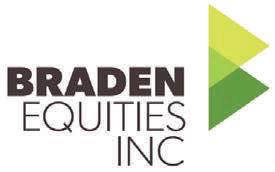
Professional Property Management
Condominium Specialists
10340 –124 St NW, Edmonton, AB. T5N 1R2 Phone: (780) 429‐5956 Fax: (780) 429‐5937 www.bradenequitiesinc.com


A tailored approach to risk management.

At Gallagher we tailor risk management solutions and insurance coverage to the changing needs of your condominium association. Our commitment to the highest service standards makes it easy for you to do business with us.
Proud supporters of the CCI.
For more information go to ajgcanada.com or call michael_boisclair@ajg.com 403.299.2465 michael_arnold@ajg.com 403.299.1692






